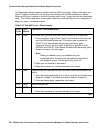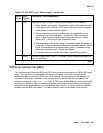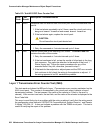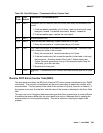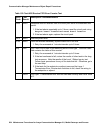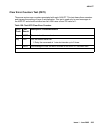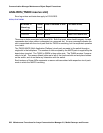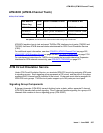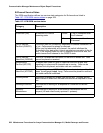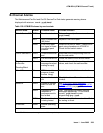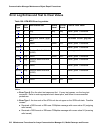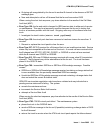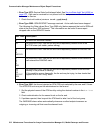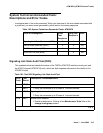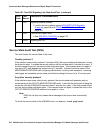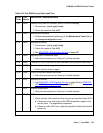
Communication Manager Maintenance-Object Repair Procedures
508 Maintenance Procedures for Avaya Communication Manager 3.0, Media Gateways and Servers
B-Channel Service States
The ISDN specification defines two service state categories for B channels as listed in
Table 157: ATM ISDN service states
on page 508.
Table 157: ATM ISDN service states
Category Description
Service states
In-Service (INS) B channel is in normal
operating state
Active A call is connected over
the B channel.
Idle There is no call on the
B channel.
Out-of-Service/
Far-End (OOS/FE)
The switch has not successfully negotiated B-channel connection as
of yet. Calls cannot be placed or received.
When you first administer a B channel, the switch initializes the
B channel to this state while it tries to negotiate a connection to the far
end. If the request times out with no response from the far end, the
switch leaves the B channel in the OOS/FE state.
Out-of-Service/
Near-End (OOS/NE)
The NPE Crosstalk test has failed, or the trunk is busied out. Calls
cannot be placed or received.
Maintenance/
Far-End (MTC/FE)
A request has timed out with no response from the far end after
signaling is in place and B channels are in service. Calls can be
received but not placed, and stable calls are unaffected.
Maintenance/
Near-End (MTC/NE)
The signaling channel (ISDN-LNK) has been busied out, possibly after
test trunk grp#/mem# long. Calls cannot be placed or received,
but stable calls are unaffected.
Pending states The switch is waiting for a reply from the far end. Pending service
states remain in effect until the near end receives a response or times
out.
Pending-in-Service The near end is waiting for a response to a transition-to-service
request.
Pending-
Maintenance
The near end is waiting for a transition-to-maintenance-service
request (US and other country-protocol-1 systems).



